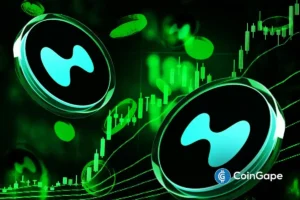Ripple’s Ambitious $1 Billion Digital-Asset Treasury: An Overview
Ripple is on the verge of launching one of its most ambitious initiatives yet—a proposed $1 billion Digital-Asset Treasury (DAT) aimed at accumulating and managing XRP as a long-term reserve. This move, highlighted in a Bloomberg report, is set to be financed through a Special Purpose Acquisition Company (SPAC) structure, a method often employed in traditional finance to raise capital via Initial Public Offerings (IPOs) before merging with a target company. In the context of this initiative, the SPAC will function as a treasury vehicle that will act as a consistent buyer of XRP, thereby creating a lasting demand for the token.
Understanding Ripple’s Corporate Strategy
To provide context for this initiative, it’s crucial to differentiate between Ripple and XRP, as they are often misconstrued. Ripple is a private technology company focused on developing global payment solutions utilizing digital assets such as XRP and Ripple USD (RLUSD). Specifically, Ripple holds approximately 42% of the total 100 billion XRP supply—35 billion of which are secured in escrow and released at a rate of one billion per month. Typically, around 60% of these monthly issuances are re-locked, a strategy designed to maintain market trust and reduce volatility in XRP supply.
The introduction of a Digital-Asset Treasury represents a notable departure from Ripple’s supply management strategy. Rather than merely moderating outflows of XRP, this initiative aims to stimulate demand by instigating inflows as institutional capital moves into an entity explicitly set up to buy XRP. This shift signifies a transformation from managing market emissions to actively engineering market absorption, potentially changing the landscape for XRP and its holders.
Exploring Current XRP Treasury Market Trends
Although the concept of an XRP-centric treasury is relatively new, the broader crypto ecosystem has seen attempts to create treasuries for various digital assets, including Bitcoin. In recent months, several firms have experimented with XRP-focused funds, albeit with mixed results. For instance, Trident Digital in Singapore announced a $500 million fund in June while Webus International sought $300 million in May. Other smaller firms, such as VivoPower and Wellgistics, followed with more modest allocations. However, these ventures have generally faced a downturn, with some observing stock declines of up to 70%, suggesting that while the hype around digital-asset treasuries can be significant, the associated risks are palpable.
Despite these challenges, some companies like Webus and Wellgistics remain invested in the XRP ecosystem. They perceive XRP treasuries not as short-term speculative trades but as strategic infrastructure investments designed for cross-border liquidity and enterprise payment solutions. Ripple’s proposed $1 billion treasury would dwarf these previous efforts, potentially making a substantial impact in terms of market dynamics.
The Ripple Effect on XRP’s Market Valuation
The implementation of a dedicated XRP treasury could play a crucial role in stabilizing its price and boosting institutional confidence. Data from CoinMarketCap indicates that XRP’s liquidity on major exchanges is notably lower than many of its competitors, such as Solana and Ethereum. For instance, the total order-book depth across the top ten spot exchanges amounts to roughly $51 million, presenting challenges for large transactions.
Should Ripple’s $1 billion Digital-Asset Treasury be evenly distributed over 90 days—equating to daily purchases of approximately $11 million—it would make up more than 20% of all visible near-price liquidity on any given day. This high concentration suggests that any sustained purchasing activity from the DAT could significantly influence XRP’s price, leading to heightened market volatility in response to the elevated demand.
Anticipating Potential Price Movements
An analysis of XRP’s market liquidity suggests that even moderate buying from the Digital-Asset Treasury could translate to meaningful short-term price adjustments. Various scenarios illustrate potential price movements based on the pace of liquidity absorption. For instance, if XRP is acquired slowly over 180 days, the price might increase by 2-3% to around $2.35. A moderate pace over 90 days could lead to an increase of around 6-8%, bringing the price to approximately $2.45 to $2.48. Conversely, a rapid acquisition over 45 days could push prices up by 12-15%, with potential peaks of $2.55 to $2.65.
Given the thinner liquidity conditions, even cautious accumulation strategies will likely stir price fluctuations. However, any gains could diminish if the treasury temporarily halts its purchases or if secondary holders do decide to sell their positions into strength, indicating a temporary lift rather than sustained growth.
Navigating Future Scenarios
The introduction of Ripple’s Digital-Asset Treasury presents both risks and rewards. While it stands to fortify XRP’s market dynamics by establishing a reliable source of demand, it also poses challenges—especially concerning the inherent volatility in the crypto market. Institutional investors may view this treasury as a positive development, potentially increasing long-term confidence in XRP as a viable asset.
In conclusion, Ripple’s ambitious move to establish a $1 billion Digital-Asset Treasury sets the stage for a transformative phase in the crypto landscape. As Ripple works towards further solidifying its position in the global payment solutions space, this initiative could amplify both XRP’s visibility and its utility. For investors and stakeholders within the crypto ecosystem, monitoring these developments will be crucial in understanding the evolving potential of XRP and the broader implications for the digital asset market.

















